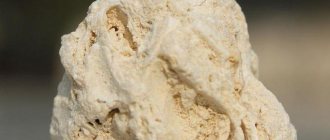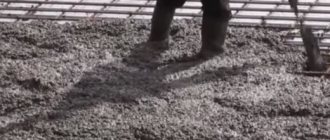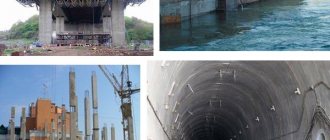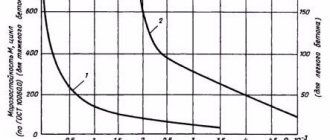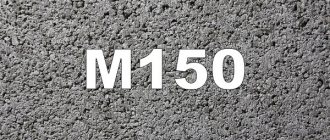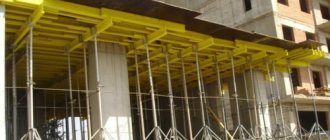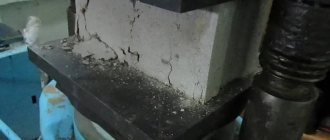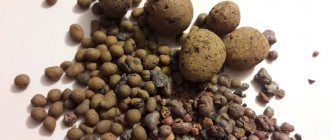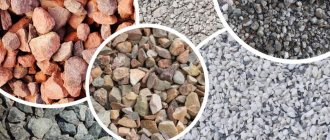Concrete is an important, in-demand building material. More than 20 billion tons of concrete mixtures are produced annually in the world. The characteristics of the material depend on the composition of the main ingredients and their proportions.
The technical properties of this material determine the classification of concrete in accordance with building codes and GOSTs.
Normative documents
The production of building materials is overwhelmingly regulated by various state standards. GOST 25192-2012 defines the classification of concrete according to the main characteristics:
- Purpose;
- Resistance to various types of corrosion;
- The type of binder used, which determines the basic properties of the material;
- Structure of mortar and stone;
- Hardening conditions;
- Strength is the main parameter that is taken into account when choosing components for preparing a solution;
- Rate of strength gain;
- Density is average;
- Frost resistance;
- Waterproof;
- Abrasion resistance.
Let's consider the main features that must be taken into account when choosing concrete for construction.
Types of additives
Additives to different types of concrete mixtures include plasticizers, hardening accelerators and retarders, compositions for increasing heat and frost resistance, superplasticizing mixtures for castings with prestressed reinforcement, and sets of substances for structural reinforced concrete.
The range of such additives includes over a hundred compounds. Even if large construction associations do not have their own research and production base for creating and testing new compositions, specialized laboratories are always at their service, where they can order the development of a composition in relation to a specific type of construction. That is, with given properties.
For frost-resistant concrete, complex plasticizers, sulfates (as a result of chemical reactions with concrete release heat), and antifreezes (ensure hydration processes with cement) are added.
Water resistance is ensured by the introduction of paraffins, octadecanoic or naphthenic acids into the mixture, which fill the pores and prevent moisture from penetrating through the mass of the finished concrete. Concrete with such additives in screeds is especially relevant, providing at the same time as strengthening and leveling the floor and interfloor waterproofing.
For strength, calcium chloride, soap solutions, and fiber fibers are added.
There are additives that increase setting time. They are used if it is necessary to deliver the finished concrete mixture over a long distance in the warm season, when the setting of the solution is increased.
And if the casting is a flat panel into which it is almost impossible to lay a reinforcing mesh and use a vibrator to compact the mixture, then a self-compacting additive is added to the concrete for such castings, which works by enveloping the fillers introduced into the mixture, leaving no room for gas bubbles. It is especially important to introduce such additives into the pouring of screed on the floor for its leveling and waterproofing.
Classification of concrete by strength
Strength is the first indicator that is taken into account when choosing a brand and class of material when drawing up a project and its calculations. The stone must normally absorb incoming loads, its resistance to them must be in reserve, but not in excess - this will significantly increase the cost of the construction process, but will not be used effectively.
How is the strength of concrete stone measured:
- When mixing the solution, take a small amount of the mixture and pour it into a cube mold with a side of 100 mm.
- After 28 days (the period of full strength gain), the sample is sent for testing to the laboratory, where the cube is examined under pressure with different forces.
- Based on the result, compliance with the brand and class is determined.
The classification of concrete by grade and class is always interconnected, the values correspond to each other (see table):
Grade is the average strength value for a material of a given composition. This is a laboratory indicator; in practice, under operating conditions, the product is affected by destructive influences and the strength characteristics of the stone change.
The margin of error in strength virtually eliminates another type of classification – class. This is an accurate indicator with an acceptable error of no more than 5%. Modern designers and engineers in design documentation primarily indicate the concrete class designation, sometimes in a paired version: B20 (M250).
It is worth noting that not every manufacturer’s enterprise has laboratories, so the supplied concrete solution is necessarily tested by construction companies. It often happens that after the expiration of the strength-building period (28 days), experts identify a discrepancy between the specified class and then the structures must be dismantled.
GOST regulates additional divisions by strength:
- Medium strength concrete (up to B50);
- High strength concrete over B55 inclusive.
Heavy concrete is the main type of concrete used in mass construction
I will give their main parameters and requirements for production and use.
CHARACTERISTICS OF CONCRETE:
According to quality indicators, concrete is divided: - according to strength:
for compressive strength classes: B3.5;
AT 5; B7.5; AT 10 O'CLOCK; B12.5; B15; IN 20; B22.5; B25; B27.5; B30; B35; B40; B45; B50; B55; B60; B70; B80; B90; B100; B110; B120, - according to frost resistance:
F50, F75, F100, F150, F200.
- waterproof
for brands: W2, W4, W6, W8, W10, W12, W14, W16, W18, W20;
- according to abrasion
when tested on an abrasion circle for grades: G1, G2, G3.
Concrete classes for strength, grades for frost resistance, water resistance and abrasion are established in accordance with design standards and are indicated in design and technological documentation, standards and technical specifications for products and structures.
The minimum class of concrete for compressive strength for reinforced products and structures is accepted according to GOST 13015.
The age of concrete at which the specified technical requirements are met must be indicated in the design. The design age of concrete is assigned in accordance with design standards, taking into account the hardening conditions of concrete, construction methods and the timing of actual loading of structures.
If the design age is not specified, the technical requirements for concrete must be met at the age of 28 days. The values of the standardized indicators of the tempering and transfer strength of concrete for prefabricated concrete and reinforced concrete products are established in the standards or technical specifications for these products.
The values of standardized strength indicators for concrete of monolithic structures at intermediate ages are established in the technological documentation.
REQUIREMENTS FOR CONCRETE MIXTURES:
The composition of the concrete mixture should be selected in accordance with GOST 27006, taking into account the requirements of GOST 31384. The selection of the composition of the concrete mixture for concrete structures of classes KS-2 and KS-3 in accordance with GOST 27751 is carried out in laboratories that meet the requirements of GOST ISO/IEC 17025.
Concrete mixtures for concrete grades of frost resistance () and higher should be made using air-entraining (gas-forming) additives. entrained air in the concrete mixture must be at least 4%.
When assigning several design requirements to concrete, the composition of the concrete mixture must ensure the production of concrete with standardized properties in accordance with the requirements of this standard.
REQUIREMENTS FOR MATERIALS FOR CONCRETE:
Cements, coarse and fine aggregates, water and additives must meet the requirements of standards and technical specifications, taking into account the requirements of GOST 31384. The specific activity of natural radionuclides in materials used for the preparation of concrete mixtures must not exceed the limit values established by GOST 30108.
The possibility of using concrete materials whose quality indicators do not meet the requirements of this standard must be confirmed by supporting studies.
As binding materials, cements that meet the requirements of GOST 10178, GOST 22266, GOST 31108, GOST 33174 should be used. In aggressive operating conditions of products and structures, the type of cement should be selected in accordance with GOST 31384.
For concrete with compressive strength B60 and higher, Portland cement without mineral additives should be used, grade not lower than PC 500 according to GOST 10178 or class not lower than TsEM I 42.5 according to GOST 31108 with a content of not more than 8%.
The minimum cement consumption for heavy concrete intended for the manufacture of products and structures used in aggressive environments should be taken according to
GOST 31384.
Fillers for concrete are selected according to their grain composition, strength, frost resistance, density, content of dust and clay particles, the presence and content of harmful and foreign contaminants, radiation-hygienic characteristics and other quality indicators according to GOST 8267 and GOST 8736.
Natural sand in accordance with GOST 8736, sand from rock crushing screenings in accordance with GOST 31424, their mixtures, sand from blast furnace and ferroalloy slags of ferrous metallurgy in accordance with GOST 5578, as well as fine-grained ash and slag mixtures in accordance with GOST 25592 are used as fine aggregate for concrete. aggregate should be in the range from 2000 to 2800 kg/m inclusive. dust and clay particles in fine aggregate should not exceed 3% by weight.
dust and clay particles in fine aggregate of concrete class B60 and higher should not be more than 2% by weight. Crushed stone, crushed stone from gravel and gravel from dense rocks in accordance with GOST 8267, crushed stone from screenings of crushing dense rocks should be used as fillers for concrete according to GOST 31424, crushed stone from blast furnace and ferroalloy slags of ferrous metallurgy according to GOST 5578, crushed stone from crushed concrete and reinforced concrete according to GOST 32495, crushed stone from thermal power plant slag according to GOST 26644.
The average density of coarse aggregate should be in the range from 2000 to 3000 kg/m inclusive. Crushed concrete and reinforced concrete should not be used in concrete with a compressive strength class higher than B35.
Types of harmful impurities in fillers and their permissible content - according to
GOST 8267 and GOST 8736. The largest grain size of the aggregate must be established in standards, technical specifications or other regulatory and technical documents for concrete and reinforced concrete products and structures, approved in the prescribed manner.
Coarse aggregate should be used in the form of separately dosed fractions when preparing a concrete mixture. It is allowed to use coarse aggregate in the form of a mixture of two adjacent fractions.
As a coarse aggregate for concrete with compressive strength classes B60 and higher, crushed stone from dense rocks should be used in accordance with GOST 8267, crushability grade not lower than 1200. The grains of weak rocks in crushed stone for concrete classes B60 and higher should not exceed 5% of the mass.
Density
The ratio of mass to volume is the next indicator that is taken when choosing a material. Classification by concrete density according to GOST:
- Particularly light (spongy) with high porosity. Volumetric weight – up to 800 kg/m3. These are foam and aerated concrete;
- Lightweight with a density of 800-2000 kg/m3. These are pumice concrete, slag concrete, wood concrete and other materials based on a cement binder with light aggregates;
- Heavy concrete or ordinary. Their density is 2000-2500 kg/m3. This is a standard material for the basic construction of building structures and monolithic housing construction. Filler – crushed stone, gravel;
- Particularly heavy concrete contains filler from barite, metals and iron ores. The volumetric weight of such material exceeds 2500 kg/m3. Concrete is used in the construction of specific facilities where protection from radiation of various natures is necessary (laboratories, landfills, nuclear power plants).
Light and extra-light concretes have low density and high porosity and retain heat well indoors. Their use is possible without additional insulation.
Heavy and especially heavy concrete is durable. Their use makes it possible to build high-impact objects with a number of floors, of any configuration in different climatic conditions, which cannot be said about porous materials. True, stones on crushed stone and metal filler do not retain heat well - to avoid additional thermal insulation, you will have to install a very thick structure, which will require considerable expenses.
Classification by type of binder
Binder is an essential component of concrete mortar. The parameters of the future concrete stone depend on its characteristics. GOST 25192-2012 defines the classification of concrete according to the type of binder:
- Cement (Portland cement, slag, pozzolanic, etc.) is used for the preparation of general purpose solutions;
- Slaked lime improves the quality of the mixture, plasticity, and resistance to moisture;
- Slag increases the resistance of the material to sulfates;
- Gypsum is added to concrete to prepare plasters for interior work, for the manufacture of decorative items and simple self-supporting structures;
- Special types of binders are polymers of complex structure introduced into the solution to acquire the necessary specific qualities by the material.
In practice, binder components are combined to adjust individual properties of concrete.
Description of technical requirements and characteristics of paving slabs
The production of concrete paving slabs in the Russian Federation is regulated by the interstate standard GOST 17608-2017, which came into force on March 1, 2022. This standard was introduced to replace the outdated GOST of 1991 and complies with the European standard EN 1338:2004 (Concrete paving blocks - Requirements and test methods, NEQ). The standard applies to concrete paving slabs made of heavy and fine-grained concrete (GOST 26633).
Paving stones can be produced in one or two layers with a front layer of various colors, including mixed and transitional shades (Colormix series), with a textured decorative layer, with or without additional processing (Premium and Premium Eco series).
Types of paving slabs by configuration:
- K – square;
- P – rectangular;
- Ш – hexagonal;
- D – additional;
- F - curly;
- GR – lawn grid.
- cm – mixed collection;
- other – drainage products.
Frost resistance
When choosing concrete, be sure to take into account the climatic conditions in which the structure will be used. For the middle and northern zones - this is frost resistance (F). It is regulated by plasticizers:
- Low frost resistance less than F50;
- Average frost resistance (F50...F300);
- High frost resistance (F300 and more).
Curing conditions
Concrete with different compositions require certain hardening conditions:
- Natural conditions (temperature 20-22°C, humidity about 50-70%);
- Heat treatment at normal pressure is necessary, for example, during winter construction, when maintaining a positive temperature is required;
- Heat treatment at high pressure (autoclave). This is how individual structures for construction are created.
Classification of types of concrete helps to make the right choice of material, taking into account all the key qualities of the material. We recommend purchasing material with the selected characteristics from specialized manufacturers who provide documentation confirming the quality. Only in this case will all the conditions and subtleties of the formulation be met, which means that the material will have the qualities specified in the calculations.
- Wall kit
- Foundation
6.3. Carrying out the test
6.3.1. Load the drum with three samples of the same series and abrasive through the removable lid, fill the drum with water through pipe 4 and turn on the shaft drive with the impeller. The impeller rotation speed should be (1100±50) min.
Damn.3. Drum abrasion
1- drum; 2 - shaft; 3 - impeller; 4 — water supply pipe; 5 - drain pipe; 6 - removable cover.
6.3.2. A total of 10 test cycles are carried out for each series of samples. The duration of one test cycle is 3 hours.
After each cycle, the samples are removed from the drum and washed with water. After that, the abrasive in the drum is completely replaced in accordance with the requirements of clause 3.2.2.

